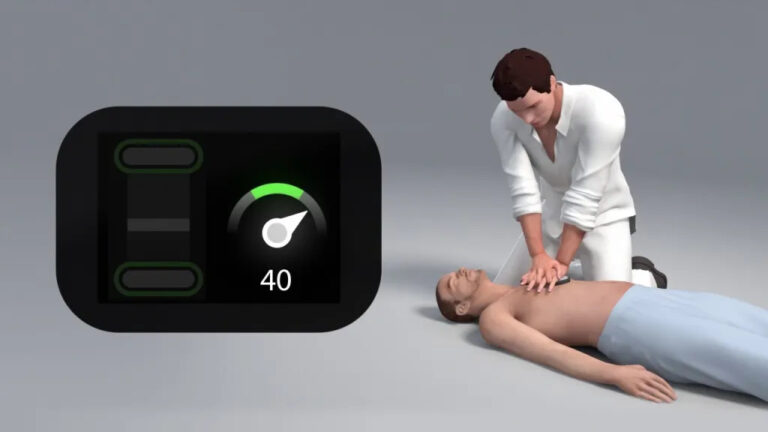How to Avoid Dry Socket? Causes and Prevention
A dry socket is a painful physical condition after tooth extraction. It happens when the blood clot forming in the socket to safeguard the bone and nerves is dislodged. A dry socket can delay the healing process and increase the risk of infection. But how to avoid dry socket?
In this article, you will learn what dry socket is, what causes it, and how to prevent it. Following simple tips and precautions, you can avoid dry sockets and enjoy a smooth recovery after tooth extraction.
What is Dry Socket?
A dry socket is a complication that affects about 2% to 5% of people who have a tooth extracted. It usually occurs 3 to 5 days after the extraction, but it can happen anytime within the first week.
When a tooth is extracted, a blood clot typically forms in the socket to shield the underlying bone and nerves from air, food, and saliva exposure. The blood clot also acts as a scaffold for new tissue and bone to grow and fill the socket.
However, the blood clot can sometimes be dislodged prematurely, exposing the socket. It can cause severe pain, bad breath, and fever. The pain can radiate to the ear, temple, or neck on the same side as the extraction. The socket may also have a whitish or greyish appearance instead of a dark red colour.
A dry socket can delay the healing process and increase the risk of infection. If left untreated, dry sockets can lead to more severe complications.
The Two Most Common Causes of Dry Socket
The exact cause of dry sockets is not fully understood, but some factors can increase the likelihood of developing it.
The two most common causes of dry sockets are:
Smoking and Suction
Smoking or using any form of tobacco after tooth extraction can interfere with the formation and stability of the blood clot. The nicotine in tobacco can constrict the blood vessels and slow the blood supply to the socket. The chemicals in tobacco can also irritate the wound and delay healing.
Smoking or using a straw, spitting, or rinsing can create suction in the mouth that can dislodge the blood clot from the socket. Suction can also introduce air bubbles into the socket, preventing proper healing.
Other Common Causes
Bacterial
Some people may have pre-existing bacterial infections in their mouth that can contaminate the socket and prevent clotting. Bacteria can also enter the socket from food particles, plaque, or saliva trapped in the wound.
Chemical
Some medications or substances can affect the blood’s ability to clot or dissolve clots faster. These include anticoagulants (blood thinners), aspirin, oral contraceptives, steroids, alcohol, and caffeine.
Mechanical
Some dental procedures or habits can disturb the socket and cause bleeding or clot loss. These include biting or chewing on the extraction site or wearing dentures or partials that do not fit well.
Physiological
Some people may have medical conditions that make them more prone to developing dry sockets. These include diabetes, immunodeficiency disorders, and poor oral hygiene.
Common Dry Socket Symptoms
The most common symptom of a dry socket is intense pain that starts 3 to 5 days after the tooth extraction. The pain may be throbbing, sharp, dull, or burning. It may worsen at night.
Other symptoms of dry socket may include:
- Inflammation and swelling of the gum around the extraction site
- Fever or chills
- Lymph node enlargement in the neck or jaw
- Difficulty opening the mouth (trismus) or swallowing (dysphagia)
- Exposed bone in the socket
- Absence of a blood clot in the socket
How to Treat Dry Socket?

The main goal of treating dry sockets is to relieve pain and prevent infection. Your dentist may prescribe painkillers or antibiotics to help you manage your symptoms and reduce the risk of complications.
Your dentist may also perform the following procedures to treat your dry socket:
Flushing Out the Socket
Your dentist may use a syringe or a particular device to flush out the socket with saline or an antiseptic solution. It will help remove debris, bacteria, or food particles that may irritate the wound and prevent healing.
Self-Care
Your dentist may instruct you to gently rinse your mouth with hot salt water or a prescribed mouthwash several times daily. It will help keep the socket clean and promote healing. You should avoid alcohol-based mouthwashes, which can dry the socket and cause more pain.
Medicated Dressings
Your dentist may pack the socket with a medicated dressing or gauze soaked in an anaesthetic or antiseptic solution. It will help protect the socket from exposure, reduce pain, and stimulate healing. You may need to change the dressing daily or every few days until the socket heals.
Beware of a Lost Blood Clot
After tooth extraction, a blood clot emerges in the socket, which is crucial for healthy healing. It offers a foundation for new tissue and bone growth while shielding the bone and nerves from exposure and infection.
However, sometimes the blood clot can be lost or dislodged prematurely, leaving the socket empty and exposed. It can lead to a dry socket, a painful condition that can delay healing and increase the risk of complications.
You should follow some simple tips and precautions after your tooth extraction to prevent losing the blood clot.
These include:
- Caring for the tooth extraction site
- Rinse your mouth gently with hot salt water or a prescribed mouthwash
- Avoid rinsing too vigorously
- Floss your teeth carefully
How to Prevent Dry Socket After Wisdom Teeth Removal?
How to avoid dry socket after wisdom teeth removal depends on the conditions. Wisdom teeth removal is a dental process that involves extracting one or more wisdom teeth from their sockets in the jawbone. The process is usually done under local anaesthesia, but sometimes sedation or general anaesthesia may be used.
Wisdom teeth removal can cause discomfort and swelling for a few days after the surgery. However, most people recover well and do not experience any complications.
However, some people may develop dry sockets after wisdom teeth removal. A dry socket is painful when the blood clot forming to protect the bone and nerves is dislodged or dissolved prematurely, exposing and inflaming the socket.
You should follow some simple tips and precautions before and after your surgery to prevent dry sockets after wisdom teeth removal.
These include:
- Don`t use a straw for 24-48 hours after your surgery
- Avoid spitting vigorously after rinsing for 24-48 hours after extraction
- Don’t smoke or use oral tobacco for 48 hours
- Proper oral hygiene
- Ask about medication interactions
- Don`t involve in a physical activity
- Avoid cold and hot drinks or food
- Inspect the tooth socket
When to See a Dentist?
How to avoid dry socket demands visiting your dentist regularly after removing wisdom teeth to monitor your recovery and prevent complications. You should keep your follow-up appointments and follow your dentist’s instructions carefully.
See your dentist if you experience any of the following signs or symptoms:
- Severe pain that does not improve with painkillers or home remedies
- Bleeding that does not stop with pressure or gauze
- Swelling that does not subside with ice or anti-inflammatories
- Fever or chills that indicate an infection
- Difficulty opening your mouth or swallowing
- Numbness or tingling in your lips, chin, or tongue
- Dry socket or exposed bone in the socket
- Any other signs of complications or concerns
Frequently Asked Questions (FAQs)
What Happens If You Don’t Treat a Dry Socket Tooth?
If you don’t treat a dry socket tooth, you may experience severe pain, a bad taste in the mouth, and fever. You may also increase the risk of infection and complications such as osteomyelitis. A dry socket can also delay the healing process and affect the outcome of your tooth extraction. You may also have cosmetic issues such as bone loss, gum recession, or tooth shifting.
What is Dry Socket Osteitis?
Dry socket osteitis is another name for dry socket. It is a condition that occurs when the blood clot that forms in the socket after a tooth extraction is dislodged or dissolved prematurely, leaving the bone and nerves exposed and inflamed.
Dry socket osteitis can be prevented by following simple tips:
- Do not use a straw, spit, or smoke for 24 to 48 hours after your surgery
- Avoid brushing, flossing, or rinsing vigorously for 3 to 4 days after your surgery
- Eat soft foods and avoid crunchy, complex, or challenging foods for a few days after your surgery
- Maintain proper oral hygiene and rinse your mouth gently with warm salt water or a prescribed mouthwash several times a day
Conclusion
A dry socket occurs after tooth extraction. It happens when the blood clot forming in the socket to protect the bone and nerves is dislodged or dissolved prematurely, exposing and inflaming the socket.
Dry sockets can be prevented by following the simple tips discussed above. If you suspect you have a dry socket or another complication, you should contact your dentist as soon as possible. Follow your dentist’s instructions carefully and keep follow-up appointments until your socket heals completely.






